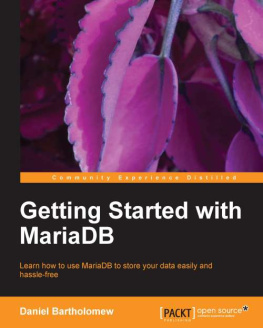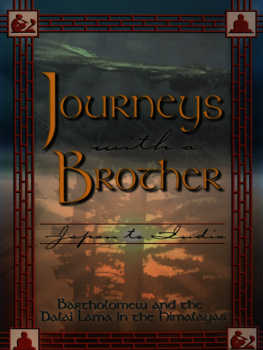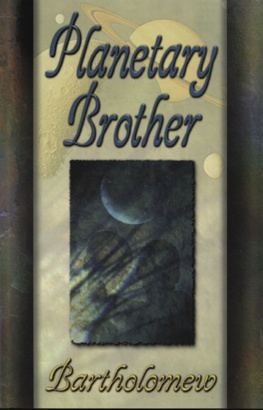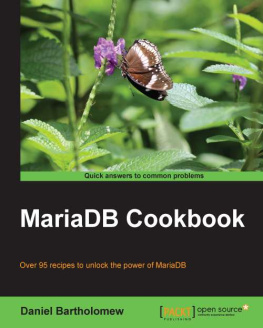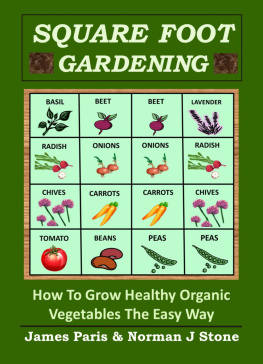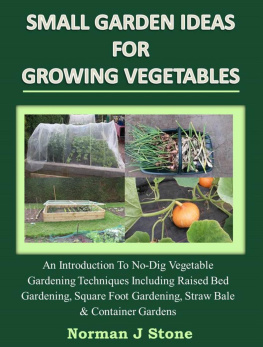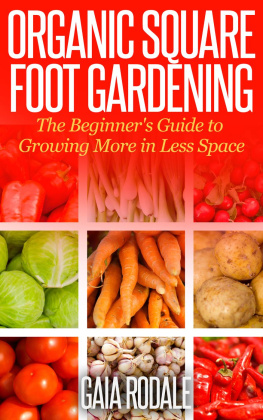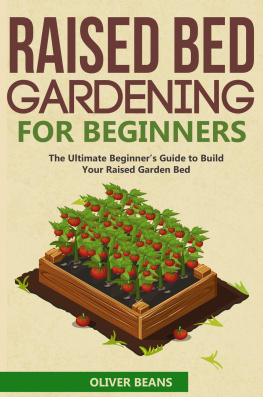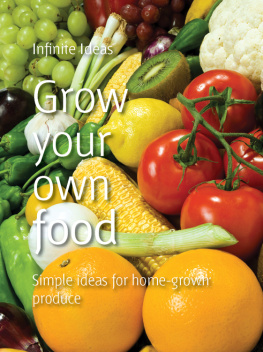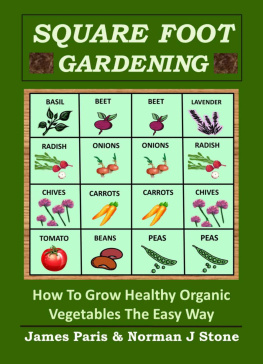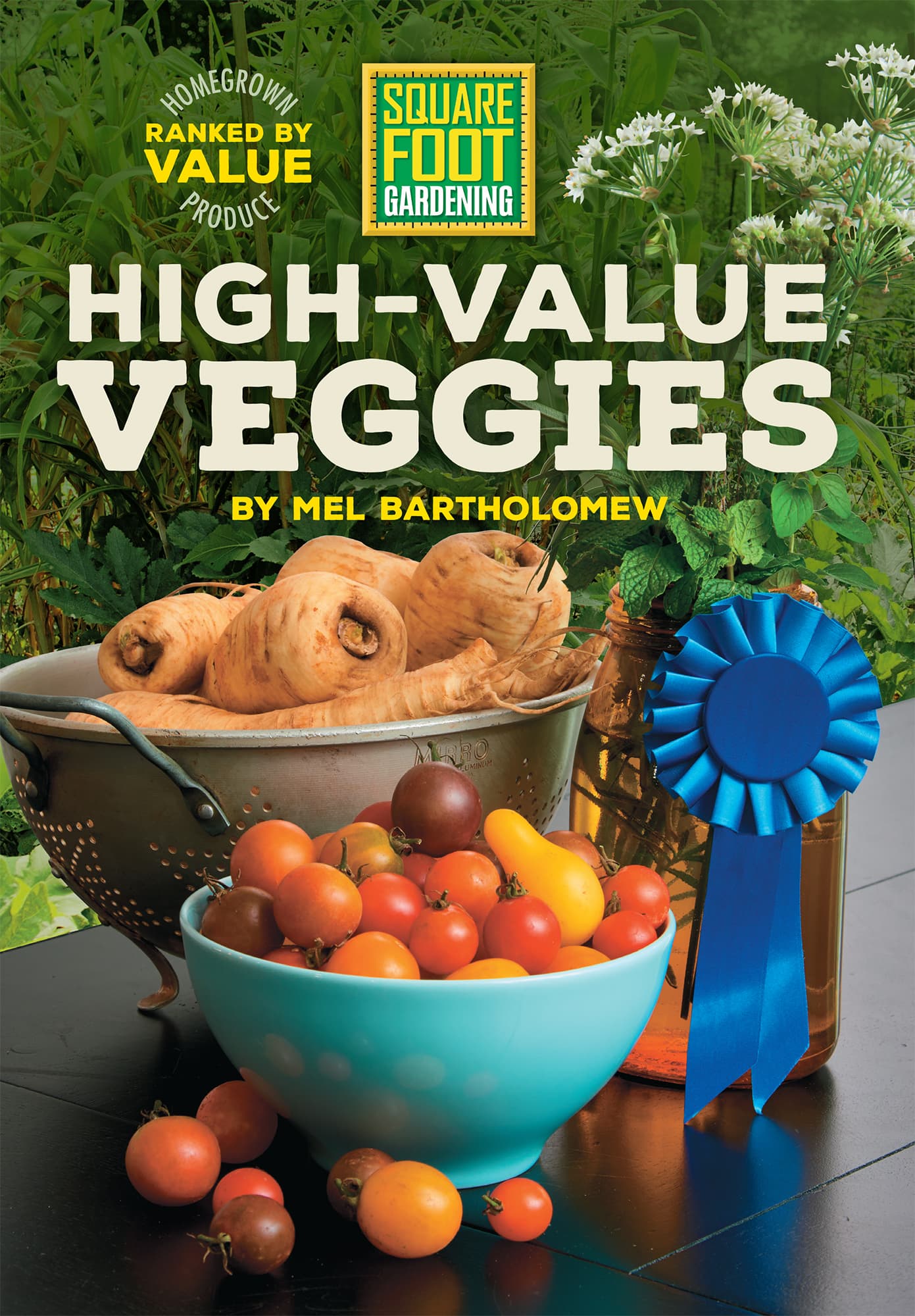HIGH-VALUE
VEGGIES
BY MEL BARTHOLOMEW


2016 Quarto Publishing Group USA Inc.
Text 2016 Mel Bartholomew
First published in 2016 by Cool Springs Press, an imprint of Quarto Publishing Group USA Inc.,
400 First Avenue North, Suite 400, Minneapolis, MN 55401 USA. Telephone: (612) 344-8100 Fax: (612) 344-8692
quartoknows.com
Visit our blogs at quartoknows.com
All rights reserved. No part of this book may be reproduced in any form without written permission of the copyright owners. All images in this book have been reproduced with the knowledge and prior consent of the artists concerned, and no responsibility is accepted by producer, publisher, or printer for any infringement of copyright or otherwise, arising from the contents of this publication. Every effort has been made to ensure that credits accurately comply with information supplied. We apologize for any inaccuracies that may have occurred and will resolve inaccurate or missing information in a subsequent reprinting of the book.
Cool Springs Press titles are also available at discounts in bulk quantity for industrial or sales-promotional use. For details contact the Special Sales Manager at Quarto Publishing Group USA Inc., 400 First Avenue North, Suite 400, Minneapolis, MN 55401 USA.
10 9 8 7 6 5 4 3 2 1
Digital edition: 978-0-76035-078-2
Softcover edition: 978-1-59186-668-8
Library of Congress Cataloging-in-Publication Data
Names: Bartholomew, Mel, author.
Title: Square foot gardening high-value veggies : homegrown produce ranked by value / Mel Bartholomew.
Description: Minneapolis, MN : Cool Springs Press, 2016.
Identifiers: LCCN 2015040351 | ISBN 9781591866688 (pb)
Subjects: LCSH: Vegetable gardening--Economic aspects. | Square foot
gardening. | Rate of return.
Classification: LCC SB320.9 .B37 2016 | DDC 635--dc23
LC record available at http://lccn.loc.gov/2015040351
Acquiring Editor: Mark Johanson
Project Manager: Alyssa Bluhm
Art Director: Cindy Samargia Laun
Book Design and Layout: Simon Larkin
Cover Photography: Paul Markert
SPECIAL THANKS TO THE FOLLOWING CONTRIBUTORS: W. Atlee Burpee & Company, Shawna Coronado, Rosalind Creasy, Chelsey Fields, Carolyn Henry-Johanson, Janine Larson, Sharon Lovejoy, Elizabeth Murphy, Jason Stoneburner
CONTENTS
Guide
INTRODUCTION

Mel Bartholomew doing what he likes best: relaxing in a lush Square Foot Garden.
Ive been gardening for more than 70 years. Over all those years, Ive worked with or taught more novice gardeners than I can count. Ive been around the world spreading the gardening gospel, and I can tell you, it always starts with one simple question: What should I grow? I bet you think thats an easy one. Well, think again.
The answer I usually give is: It depends. Where do you live? What are your favorite vegetables? What would your family prefer to eat? How much money could you save on groceries? How much room do you have in your yard to dedicate to a garden and what sun exposure does it receive? Any of these, and more to boot, could affect your decision.
But Ive come to believe that one of the best ways to determine what to grow, a way that works for every gardener and every garden, is to ask yourself, What are the most valuable crops I could harvest? One of the reasons many people garden, after all, is to save some money on their grocery bills. If you decide to grow zucchini rather than carrots, youre going to have to buy your carrots. But would it be smarter to grow carrots and buy your zucchini? Thats a dollars-and-sense calculation well worth making. Unfortunately, its the type of calculation that most gardeners Ive met just never make. They wouldnt know where to start.
You start with the numbers. I like numbers, and I like making them work for me. Thats how I became a successful engineer, and thats how I was able to invent a brand new way to garden. After all, you can tell just from its name that Square Foot Gardening is all about numbers.
But heres why I wrote this book. One of the very best answers to, What should I grow? is, The crops that will bring you the biggest return on your investment. Its not easy figuring out what your payback for every potential fruit or vegetable might be. You need to figure out how much yield youre going to get in a given season versus how much time, effort, and how many resources youre going to put into growing that vegetable. Youll need to find out the going market rate per pound for the vegetable, and then relate that price to the amount you can reasonably grow in a season. You can get a headache doing all that math. No need to reach for the aspirin, though; Ive done the math for you.
Just looking through a seed catalog or taking a trip to the local nursery can overwhelm someone confronted with the amazing number of options gardeners have to choose from. Next, visit a farmers market and a grocery store in the same town and youll understand the wide diversity of prices for the same edible. Figuring all that into your gardens return on investment involves a lot of calculations. But now, youll find all the calculations boiled down in one easy resourcethis book.
Fresh produce is expensive, plain and simple. Most of us are willing to pay the price because there is nothing better in the whole-food world. But instead of paying four bucks for a few leaves of kale, more people are choosing to grow their own veggies. In fact, every year there are around 800,000 first-time gardeners in the USA. But just as you need to pay attention to prices and be a smart shopper at the market, you need to make smart investment decisions when youre planning and planting your garden.
MY STORY
My interest in gardening started at a young age, watching my mother tend our backyard garden in Buffalo, New York. When we moved to San Gabriel, California, we could be outdoors all year round, and I was assigned garden duties. World War II brought Victory Gardens. Our next move took us to Ridgewood, New Jersey, where I did so much weeding and heavy work that I came to hate gardening. It was time I could have spent playing ball. When I left for college I vowed, I will never garden again! As the years went by, I moved my own family several times, started my own business, and was too busy for much more than a tomato patch. I sold my company and retired at 42 and decided to rediscover gardening as a hobby. As a trained engineer, I was always looking for efficiency in the numbers. Thats what led me to found Square Foot Gardening, the method that led me to write several bestselling books, film several TV shows, and start a nonprofit foundation. I wanted to design a better way to garden to get a bigger yield with less work. I didnt want to waste any time, effort, money, or space. Why would you want to plant a lot of one crop that takes a long time to mature or has little food value or takes an inordinate amount of water or fertilizer compared to its yield? When I was learning and listening to experts, I kept thinking, this is all backwards. Its not how much you want to plant, or how long the rows are, it should be how much you want to harvest and even more important, what value are you getting for all your efforts? That led me to think about the best crop to plant for the best dollar return and yield! I found that in Square Foot Gardening.


